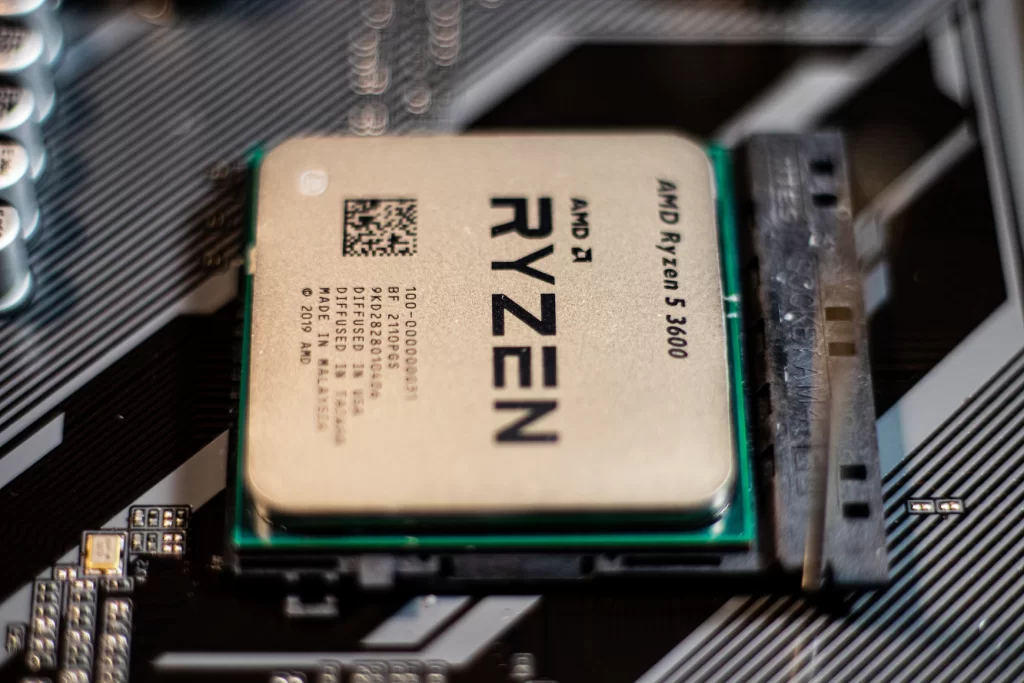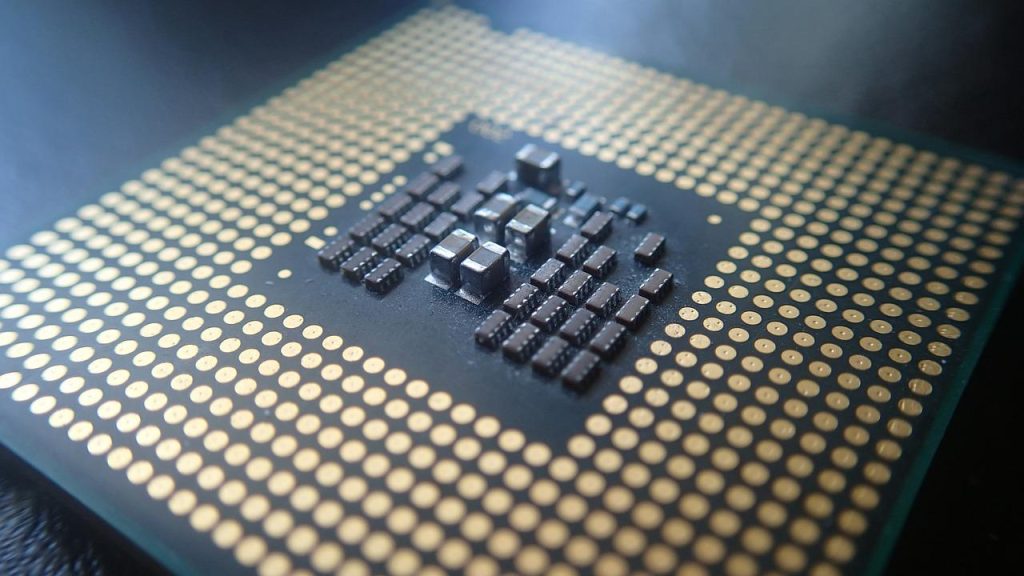The other day, while upgrading my PC’s AMD Ryzen CPU, a thought struck me:
Are the pins at the bottom of CPUs made of Gold? After all, they look like Gold. I have a few gold coins in my house, and the pins share that same unmistakable yellow luster of the most precious of metals.
Could there really be thousands of CPU-shaped gold mines buried in our aging PCs waiting to be dug out and melted down?
Excited to find an answer, I jumped on my laptop in search of an answer.
This is what I found:
Are CPU pins made of Gold? No, CPU pins are not made of solid Gold. They are platted in Gold to aid in electrical conductivity and stop corrosion. A CPU pin’s core is made from other metals which are just as valuable as Gold, such as Platinum. However, extracting these metals profitably from the CPU pins can be difficult and expensive.
Ok, now we know that CPU pins are not solid Gold. But there’s so much more to learn. So in this article, I touch on several interesting topics:
- I look at what CPUs pins are made of in more detail.
- What the Core of CPU pins are made of.
- Why CPUs have Gold plated pins instead of another metal.
- Whether it’s worth scrapping CPUs to extract the Gold.
Ok, that’s a lot for me to be getting on with answering. Let’s start by answering the original question – Are CPU pins made of Gold? – in more depth.
Are CPU pins made of Gold?

Sadly, CPU pins are not made from solid Gold, even though they may appear to be. CPU pins are, in fact, only gold-plated. This is what gives them their distinctive burnt-yellow tinge of color. This means that, technically, though there is a thin layer of Gold on the CPU pins, the amount is tiny. The gold layer plated onto the CPU pins is literally only a few atoms thick. That is just enough Gold to make the pins appear manufactured from solid Gold. If you could give the pins a quick rub with some sandpaper, those few delicate layers would disintegrate, revealing the grey metal cores beneath.
Taking all of the Gold plated onto the pins amounts to around 200 mg of Gold. That’s not exactly going to turn you into a millionaire overnight.
Unfortunately, CPU pins are not made from a substantial amount of Gold. So much for slicing the pins off with pliers and melting them down into gold bars. One can always dream.
In the next section, we’ll look at how much money the Gold you can extract from a typical CPU.
How much Gold can you get from CPU pins?

In the last section, you learned that CPU pins are not made from solid Gold.
In this section, we’ll examine how much Gold can be extracted from your average desktop and laptop CPU.
It’s estimated that the average desktop CPU contains around 1/5th of a gram of Gold or 200mg. Today’s gold prices make the total amount of Gold in a desktop CPU worth about $12. That doesn’t sound like a lot, does it?
That’s because it’s not.
Sadly, the figures are even worse for Laptops.
The average laptop CPU contains roughly 1/10th of a gram of Gold or 100mg, half the amount you’ll find in a typical desktop CPU. This means that the average laptop CPU contains around about $6 of Gold.
That’s not going to let you retire any time soon.
So in this section, you learned that the amount of Gold in desktop CPUs is worth around $12, and the amount of Gold in laptop CPUs is worth around $6.
In the next section, you learn what metal actually makes up the core of the CPU pins underneath the plated Gold.
What metal are CPU pin cores made from, if not Gold?

In the last section, you learned that CPU pins are not made from solid Gold. That instead, the pins are Gold plated.
In this section, we’ll look at what metal makes up the core of the CPU pin under the Gold.
Underneath the few atoms of gold platting on the CPU pins is another metal that provides shape, rigidity, and added conductivity to the CPU pins.
In most cases, the metal that fills in the core of CPU pins is platinum. However, other metals are often used by manufacturers. For example, some CPU pins use Palladium, Ruthenium, and even the metal that tips fountain pens, Iridium.
Usually, the metal that fills the pin’s core is chosen based on the pin’s desired electrical conductance. For example, in modern pins, most if not all of the electrical conductance needed by the CPU is served by the Gold platting. Those few atoms’ thick layers of gold let electrons flow with ease.
But in new CPUs that use platinum core pins, platinum assists in conducting electricity to the CPU.
In this section, you learned that the core of a CPU pin can be made from Platinum, Palladium, Ruthenium, and Iridium.
In the next section, we’ll examine why CPU pins are Gold plated.
Why do CPUs have Gold plated pins?

In the last section, we explored what metals CPU pin cores are made from.
In this section, I’ll look at why CPU pins are Gold plated.
The best conducting metals at room temperatures are Silver and Copper. However, both of these metals come with a big problem. They are very reactive to air. When exposed earth’s moist atmosphere, both of these metals readily oxidize, forming a layer of oxide on the surface of the metal.
Copper starts to grow a fertile-looking green and turquoise patina. You’ll likely see these beautiful weathered colours on Copper glad buildings and copper statues.
Silver, on the other hand, starts to tarnish. The silver oxide forms a white powder that obscures silver’s natural mirror-like finish.
Both of these forms of oxidisation mean that copper and silver make poor external electrical connectors because the oxidisation layer that forms interferes between physical connections.
Since the CPU pins are often exposed to air, an alternative metal must be used. In this case, Gold is the 3rd best conductor of electricity at room temperature, and it is also completely inert and won’t oxidize.
You’ve probably noticed that many external electrical conducting connectors, such as headphone and HDMI cables, use Gold. It’s not because Gold is a better conductor. It’s because Gold doesn’t tarnish and maintains a good physical connection.
And that’s precisely what the tiny and sensitive CPU pins need: A near perfect physical connection. Anything less and there is a danger the CPU will malfunction or, at worse, get damaged.
In this section, we’ve learned that CPU connectors are made from Gold, not silver and Copper, because Gold is unreactive and doesn’t tarnish.
In the next section, you’ll learn whether or not it’s worth your time scrapping CPUs for their Gold.
Is it worth scrapping CPUs for Gold?
In the last section, I discovered why Gold is the preferred metal coating for CPU pins.
In this section, I’ll examine whether it’s worth you trying to scrap CPU for their Gold.
You might think you could make a bucket of cash for scrapping CPUs for their Gold. I hate to take a giant, and recently sharpened I might add, CPU pin to your balloon and burst it, but this is not the case.
The amount of Gold in a CPU is very tiny. It’s hardly worth your time going to all the trouble of taking the CPU out from the motherboard, taking it apart, and melting the pin’s gold plating down into gold bullion.
In theory, as we learned in an earlier section, a CPU should have around 200mg or 1/5th of a gram of Gold. At this price, the average CPU is worth about $12 at current gold prices.
That means if you scrapped 100 CPUs, you’d have around $1200 worth of Gold.
Not bad!
But here are two hurdles you might stumble into.
First, how will you source CPUs for less than $12? After all, if the CPU’s Gold is worth $12, you need to buy the CPU for less to make a profit.
Second, extracting the Gold from the CPUs is a time consuming and expensive process. Not to mention that it can be dangerous.
Why do you think we aren’t all melting down our old CPU components? The answer is simple: not only would the average person be way out of pocket buying all the equipment, but there’s a chance we’d burn our eyebrows off, or worse, too. That a risk I’m personally not willing to take. I like my eyebrows.
Take a look at this video from Archimedes Channel to see how difficult it is to extract Gold from CPUs.
Summary
Ok, we covered a lot of technical stuff about CPU pins and their gold content in this article.
I think I’ll end by summarising it all so you can walk away with all the essential points fresh in your mind.
- CPU pins are not made from solid Gold.
- Gold is plated onto the CPU pins as a thin layer.
- The layer of Gold is only a few atoms thick.
- CPU pins are made of other metals such as Platinum, Palladium, Ruthenium, and Iridium.
- Gold is used to plate the pins because it’s an excellent conductor of electricity that doesn’t tarnish.
- It’s not worth scraping CPUs to extract their Gold.
- The process of removing the Gold from CPUs is expensive, time-intensive, and can be dangerous.

